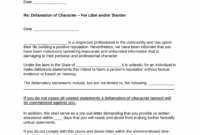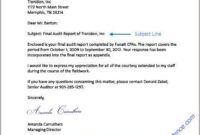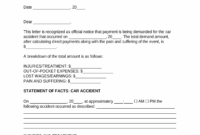Navigating the delicate process of terminating an employee’s benefits can be one of the more challenging tasks for any employer or HR professional. It requires a thoughtful approach, meticulous attention to detail, and a clear understanding of legal obligations. The goal is not just to inform but to do so with professionalism and, where possible, empathy, ensuring that the former employee understands the changes affecting their coverage and rights.
A well-crafted letter serves as the official record of this significant change, minimizing confusion and potential disputes down the line. It is a critical tool for clear communication during a sensitive transition, helping to protect both the employer and the employee. This guide aims to help you understand the essential components of such a document, ensuring you are equipped to handle these communications effectively and compliantly.
Why Clear Communication is Crucial When Terminating Benefits
When you are discontinuing an individual’s benefits, whether due to employment separation, a change in eligibility, or a policy update, the way you communicate this decision is paramount. Vague or incomplete information can lead to misunderstandings, frustration, and even legal challenges. Employees have rights concerning their benefits, especially when it comes to continuation options like COBRA or state-specific programs. Failing to inform them properly can result in significant penalties and damage to your organization’s reputation.
Beyond legal compliance, clear communication reflects positively on your company culture. Even in difficult situations, demonstrating transparency and a commitment to providing necessary information can soften the impact. It shows respect for the individual and their circumstances, maintaining a level of professionalism that is vital for your employer brand. A comprehensive letter ensures that all parties are on the same page regarding what benefits are ending, when, and what options might be available moving forward.
Accuracy is another non-negotiable aspect. Every detail, from effective dates to specific benefit types, must be correct. Errors can cause administrative headaches for your team and unnecessary stress for the individual. Taking the time to verify all information before sending the letter can save considerable time and effort later on, preventing the need for corrections or further explanations. This diligence underscores the importance of a robust process for benefit terminations.
Ultimately, your communication strategy during benefit termination should aim to be comprehensive, compassionate, and compliant. It is about providing all the necessary details in an accessible format, anticipating questions, and offering guidance where appropriate. This approach protects your organization while also showing consideration for the individual undergoing a significant change in their life.
Key Elements to Include in Your Letter
- The effective date when the termination of benefits will occur.
- A clear list of specific benefits being terminated, such as health insurance, dental, vision, life insurance, and retirement contributions.
- The specific reason for the termination, which could be employment separation, policy changes, or a change in eligibility status.
- Detailed information regarding continuation rights, including COBRA for health benefits or any relevant state continuation options.
- Contact information for the appropriate department or individual who can answer questions about the terminated benefits or continuation options.
- Instructions for returning any company property, if applicable, for former employees.
- Information about final paycheck details and any unused paid time off payouts, if relevant to the termination scenario.
Crafting Your Termination of Benefits Letter Template with Care
Developing a reliable termination of benefits letter template is an excellent starting point for any organization. While each situation may have unique nuances, a well-designed template provides a consistent and compliant framework. The language should always be professional and factual, avoiding any emotional or accusatory tones. Remember, the letter’s primary purpose is informational: to clearly state the cessation of benefits and outline any subsequent steps or options available to the recipient.
When preparing your letter, it is crucial to customize it for each individual case. A template offers structure, but specific dates, benefit plans, and individual circumstances will always require careful personalization. Double-checking names, addresses, and the specific list of benefits being terminated is essential to avoid mistakes that could undermine the letter’s credibility or lead to confusion. This personalized approach demonstrates attention to detail and respect for the individual.
Always consider having your termination of benefits letter template and any individual letters reviewed by HR or legal counsel before sending them out. Laws regarding benefits, employment, and continuation rights can be complex and vary by jurisdiction. A legal review ensures that your communication adheres to all current regulations and helps to mitigate potential legal risks for your company. This step is a vital safeguard that no organization should skip.
Think about the structure of your letter. It should typically include the recipient’s full name and address, the date, a clear and professional salutation, the body of the letter detailing the benefits termination and related information, and a professional closing with your contact details. Providing clear contact information for questions is particularly important, as recipients may have immediate concerns or require further clarification regarding their options.
A robust and thoughtfully designed letter is more than just a formality; it is an act of responsible business practice. By clearly outlining the cessation of benefits and providing all necessary information, you empower individuals to make informed decisions about their future coverage. This diligent approach helps to maintain transparency and uphold ethical standards, even during challenging transitions.



